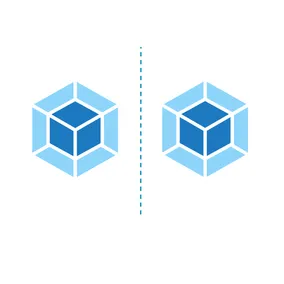Run Multiple Webpack Configs Sequentially

Eli Fatsi, Former Development Director
Article Categories:
Posted on
When one webpack config depends on the outcome of another, running the configurations sequentially can save the day.
I have a webpack build process, and it is has two isolated configurations (one for my server-side build, and another for my client-side build). Here's an incredibly simplified example:
// webpack.config.js
const clientConfig = {
entry: './src/client/index.js',
}
const serverConfig = {
entry: './src/server/index.js'
}
module.exports = [clientConfig, serverConfig]Everything clicked together quickly and easily, webpack is able to run these two builds and export different bundles for each environment. But then, of course, the joyous innocence of the early days faded as we added more functionality.
The Rub #
We pulled in a library called React Loadable (side note: fantastic library), which comes with a webpack plugin, which can generate a file during the build. This file generation is defined in the client config, but application code within the server depends on that file. Because the file itself is a build artifact, we're not checking it into our source control, and thus the build must succeed without the up-front existence of this file.
// webpack.config.js
const { ReactLoadablePlugin } = require('react-loadable/webpack')
const clientConfig = {
entry: './src/client/index.js',
plugins: [
// This plugin creates the react-loadable.json file
new ReactLoadablePlugin({
filename: path.resolve(__dirname, 'react-loadable.json')
}),
]
}
const serverConfig = {
// This entry point makes use of the built react-loadable.json file
entry: './src/server/index.js'
}
module.exports = [clientConfig, serverConfig]This is where things stop working. I've deduced that the configurations are being built in parallel, because even though the client configuration successfully creates the new file (I can see it in the build logs, and I can see those logs before I see any mention of the server build), the server build fails with a "I can't find that file!" error. If the file exists before the build runs, then everything flows smoothly, so the question became how to make it work without the pre-existence of that artifact.
The Solution #
The internet had a few things to say about this. One option is to break apart the build and manually build each configuration in isolation. This requires some fiddling with your CLI usage, but does ensure that one config completely finishes before starting the new one. I was tempted to find a more streamlined solution, one that would allow me to run webpack the way that you'd expect.
What I ended up with was an extension of WebpackBeforeBuildPlugin which simply polled for the existence of the required file.
// WaitPlugin.js
const WebpackBeforeBuildPlugin = require('before-build-webpack')
const fs = require('fs')
class WaitPlugin extends WebpackBeforeBuildPlugin {
constructor(file, interval = 100, timeout = 10000) {
super(function(stats, callback) {
let start = Date.now()
function poll() {
if (fs.existsSync(file)) {
callback()
} else if (Date.now() - start > timeout) {
throw Error("Maybe it just wasn't meant to be.")
} else {
setTimeout(poll, interval)
}
}
poll()
})
}
}
module.exports = WaitPlugin// webpack.config.js
const { ReactLoadablePlugin } = require('react-loadable/webpack')
const WaitPlugin = require('./WaitPlugin')
const clientConfig = {
entry: './src/client/index.js',
plugins: [
new ReactLoadablePlugin({
filename: path.resolve(__dirname, 'react-loadable.json')
}),
]
}
const serverConfig = {
entry: './src/server/index.js',
plugins: [
new WaitPlugin('react-loadable.json')
]
}
module.exports = [clientConfig, serverConfig]Now, the server config will hang while the client config wraps up. Checking every 100 milliseconds (for a maximum of 10 seconds), the build will only proceed when the file in question exists.
I admit that I was hoping to be able to more definably run the multiple configuration builds in sequence, but this has certainly done the trick. If you've found another solution to this problem, we'd love to hear about it in the comments below!